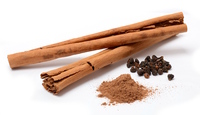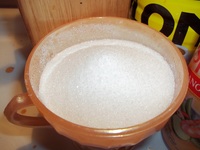Florentine Rice (17th c.)

Recipe for Florentine rice from a 17th c. book on domestic cookery | See full image and item metadata
This recipe for Florentine rice calls for imported ingredients like rice, mace, cinnamon, sack wine, and sugar as well as locally-produced staples like water, milk, butter, cream, and eggs. In the early modern era, European makers obtained these ingredients via an elaborate, millennia-old network of intercontinental land and sea routes largely monopolized by powerful non-European empires. Europeans craved cinnamon particularly for its unique strength and depth of flavor and properties as a natural painkiller and paid exorbitantly to obtain small amounts of the spice, traded along these same highly-controlled land and sea routes.
These ingredients' matter-of-fact inclusion in this 17th century recipe testifies to the Mughal, Ottoman, and Chinese empires' sustained sphere of historical influence over European diets and markets, and drives home that even staple foods that could be cultivated in Europe depended on uninterrupted access to Asian, Middle Eastern, and Austronesian foodways.
For an expanded historical study of cinnamon, see Rohitha Dasanayaka, "Cinnamon: A Spice of an Indigenous Origin—Historical Study" in Akayana (July-December 2019). For more on the evolution of the market for rice in Europe, see Daniel C. Littlefield, Rice in the Atlantic World, Oxford Bibliographies (2017).




